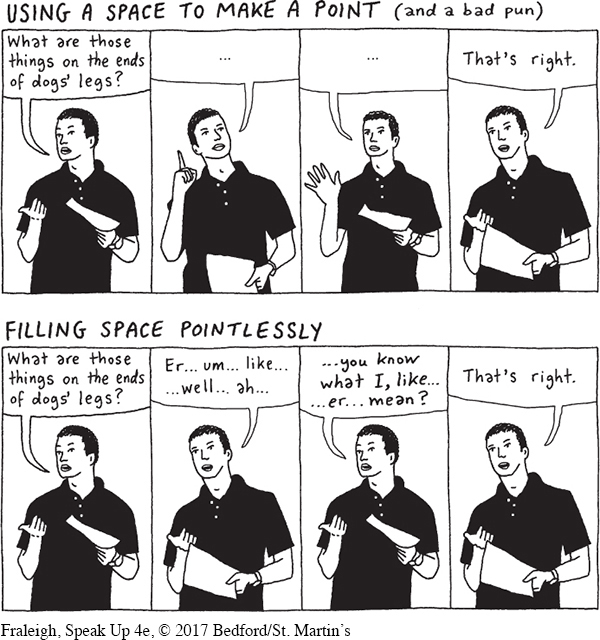Pausing
Used skillfully, pausing—leaving gaps between words or sentences in a speech—
To get the most from pausing, use it judiciously, pausing every so often rather than after every sentence. Otherwise, your listeners may wonder if you’re having repeated difficulty collecting your thoughts, or they may think you’re being melodramatic. In either case, your audience will begin to take you less seriously.
When pausing during a speech, it’s best to fill those pauses with silence rather than with verbal fillers or verbal tics. A verbal filler is a word or phrase, such as like or you know, that speakers use to fill uncomfortable silences. Here’s an example of what verbal fillers do to a speaker’s delivery:
And so, the library was closed . . . you know. But I had to study somewhere. But . . . I didn’t get to study there, and . . . but . . . I had to go somewhere . . . but . . . and . . . I tried the dorm reading room. And, like . . . it was so quiet there, you know?
384

A verbal tic is a sound, such as um or ah, that speakers use when searching for a correct word or when they have lost their train of thought:
Um . . . the purpose of my speech is . . . ah, to . . . um . . . make you see how . . . um . . . dangerous this action . . . ah . . . really is.
Everyone uses verbal fillers or tics at some point while giving speeches: it’s hard not to. But using them too often can distract your listeners or make them wonder if you’re tentative or ill-
385